54 F. high in the Twin Cities Saturday. Morning clouds and fog kept afternoon highs a few degrees cooler than expected.
56 F. average high for October 20.
55 F. high on October 20, 2011.
.03" rain predicted for the Twin Cities over the next 84 hours (NAM model). The drought lingers on.
Indian Summer Alert. The best chance of 70-degree
afternoon warmth: today, again Wednesday. Get your leaf-raking done
today; next weekend will definitely feel like November - 30 degrees
cooler than today.
Warmer, drier bias lingering into February for Minnesota? Latest winter outlook from NOAA below.
“
This is one of the most challenging outlooks we’ve produced in
recent years because El Niño decided not to show up as expected,”
said Mike Halpert, deputy director of NOAA’s Climate Prediction
Center. - from a NOAA update below.
21 of 28 counties served by the La Crosse, Wisconsin
National Weather Service have been declared Natural Disaster Areas due
to the growing drought. Details below.
When In A Drought...Don't Predict Rain. Here's the
12 km. NAM forecast for total rainfall thru Wednesday morning at 7 am;
significant rain sweeping north across Ontario, Canada, only a little
light rain for far southeastern Minnesota and parts of the Red River
Valley. It's amazing how persistent this dry pattern has been,
especially for eastern Minnesota in recent months.
"...
Their paper, “The Republicans Should Pray for Rain: Weather,
Turnout, and Voting in U.S. Presidential Elections” confirmed the
conventional wisdom that weather does affect voter turnout, bad weather
benefits Republicans and most interestingly, two presidential
elections in the last 60 years may have had different results had the
weather been different..." - excerpt from a story focused on the
impact of weather on presidential elections over the years, details and
links below. Image above:
venturebeat.com.
Deer-Hunting Opener Outlook? No, it won't be this
mild next weekend, in fact there's a good chance highs will be in the
30s with a chance of snow flurries, maybe a dusting or coating of slush
up north for tracking. Details below.
Orionid Meteor Shower Peaking.
Spaceweather.com has the details; here's an excerpt: "...
Earth
is passing through a stream of debris
from Halley's Comet, source of the annual
Orionid meteor shower. Forecasters
expect ~25 meteors per hour when the
shower peaks on Oct. 21st. No matter where you live,
the best time to look is during the dark hours before
sunrise on Sunday morning. Observers in both
hemispheres can see this shower. [video] [full story] [NASA Chat] [meteor radar] [sky map]
On Oct. 19th, as Earth was making
first contact with the debris stream, NASA's All-sky Fireball Network recorded 10 Orionid fireballs over the southern USA..." Photo above: Reuters.
 Getting Better
Getting Better.
If the sun comes out fairly quickly during the morning and midday hours
we should see highs in the mid to upper 60s, possibly brushing 70 over
the south metro with low to mid 70s south and west of the Twin Cities.
Unseasonably mild weather spills over into midweek, followed by a
Novemberlike smack by late week. Graph: Iowa State.
 4 Mild Days, Then Reality Sets In
4 Mild Days, Then Reality Sets In.
The ECMWF keeps us mild into midweek; Wednesday looks like the warmest
day with the best chance of 70-degree highs nearby. The best chance of
(light) rain comes Monday, again Wednesday - when there may be enough
instability for a few T-showers. Enjoy the mild spell because highs may
hold in the 30s to near 40 next weekend.
Today's Weather Map. The WRF model shows a dry
Sunday for most of America, a few light showers over northern New
England and the Pacific Northwest coast. Even Florida clears out as high
pressure spreads east.
Elusive El Nino Challenges NOAA's 2012 U.S. Winter Outlook.
The on-again, off-again El Nino warming of Pacific Ocean water is
looking shaky, the odds now close to 50/50, basically a coin-flip. So
NOAA has tweaked the winter outlook from December thru February - here's an excerpt of a longer explanation: "
The
western half of the continental U.S. and central and northern Alaska
could be in for a warmer-than-average winter, while most of Florida
might be colder-than-normal December through February, according to
NOAA’s annual Winter Outlook announced today from the agency’s new
Center for Weather and Climate Prediction in College Park, Md.
Forecasters with NOAA’s Climate Prediction Center say a wavering El
Niño, expected to have developed by now, makes this year’s winter
outlook less certain than previous years.
“This is one of the most challenging outlooks we’ve
produced in recent years because El Niño decided not to show up as
expected,” said Mike Halpert, deputy director of NOAA’s Climate
Prediction Center. “In fact, it stalled out last month, leaving
neutral conditions in place in the tropical Pacific.” When El Niño is
present, warmer ocean water in the equatorial Pacific shifts the
patterns of tropical rainfall that in turn influence the strength and
position of the jetstream and storms over the Pacific Ocean and
United States. This climate pattern gives seasonal forecasters
confidence in how the U.S. winter will unfold. An El Niño watch
remains in effect because there’s still a window for it to emerge..."
Meteorological Mirage or Reality: Heading Into a Stormier Pattern? When the
NAO
(North Atlantic Oscillation), a measure of the capacity for the
atmosphere to become stuck in a blocking pattern, goes negative, odds of
significant storms tend to rise, especially east of the Mississippi. A
strongly negative signal in late October and early November may signal
a better chance of Gulf moisture reaching Minnesota. I hope it's not
wishful thinking.
Drought Brings Pleas To Cut Back Water Use. Bill McAuliffe at
The Star Tribune takes a closer look at Minnesota's growing drought and the potential need for water restrictions; here's an excerpt: "
With
rivers and rainfall approaching record low levels, state officials
said Thursday they want homeowners to eliminate "nonessential" water
use, such as lawn watering and car washing, and have told farmers to
abide strictly by irrigation permits. In parts of the state, some
residential wells have run dry or had flow reduced by commercial and
residential neighbors, said Dave Leuthe, deputy director of Ecological
and Water Resources at the Department of Natural Resources. Continued
lack of rain could prompt the DNR, under terms of a drought action
plan, to require specific water conservation targets for users,
particularly cities. In recent weeks it has suspended 50
permits for surface water use by businesses, golf courses and parks
departments across the state, though many have backup water sources..."
Infographic map details above: "
The
map below is based on data released each Thursday at 8:30 a.m.
Eastern Time. The drought monitor combines numeric measures of drought
and experts' best judgment into a weekly map. It is produced by the
NDMC, the U.S. Department of Agriculture and the National Oceanic and
Atmospheric Administration and incorporates review from 300
climatologists, extension agents and others across the nation. Each week
the previous map is revised based on rain, snow and other events,
observers' reports of how drought is affecting crops, wildlife and other
indicators."
Minnehaha "Falls". Lakes, rivers and streams are at
historically low levels across much of Minnesota; here's a photo from
Jeff Wheeler at The Star Tribune that sums up the state of our
weather: "
Step into Minnehaha Creek this fall and your feet won’t
even get wet.And the thundering waterfall? Just a drip.With little rain,
flow dwindled in late summer, and the dam that releases water from
Lake Minnetonka into the creek was closed Aug. 20 to maintain the
lake’s level.(Dam closings have happened before.) Contrast the
gravel-bed look of today with June 2011, left,when heavy rain caused
streams to swell near flood levels. The dangerous,muddy conditions
didn’t keep tourists from venturing near the falls."
Drought Killing Young Trees Over Southeastern Minnesota. Here's an excerpt of a post from the
La Crosse, Wisconsin office of the National Weather Service: "...
Drought impacts include:
- River flows are well below normal. The flows were less than 20 percent of normal along the Bloody Run, Cedar, Little Cedar, Mississippi, Root, Turkey, Upper Iowa, Volga, and Zumbro South Fork.
- Record low ground levels have been established within the past month near
El Dorado, IA in Fayette County (17.33 feet below ground on September
23, 2012 - the previous record was 17.11 feet on February 6, 2009)
and Fort McCoy Military Reservation in Monroe County (9.15 feet below
ground on October 12, 2012 - the previous record was 8.62 feet on
October 7, 1987).
- Some young trees have died. Young and recently planted trees died in Winona County in southeast Minnesota and Monroe, Adams, and Juneau counties in Wisconsin.
- 21 of our 28 counties have been declared Natural Disaster Areas. This includes: Allamakee, Chickasaw, Clayton, Fayette, Floyd, Howard, Mitchell, and Winneshiek counties in northeast Iowa; Fillmore, Houston, and Mower counties in southeast Minnesota; and Adams, Clark, Crawford, Grant, Jackson, Juneau, La Crosse, Monroe, Richland, and Vernon counties in western Wisconsin."
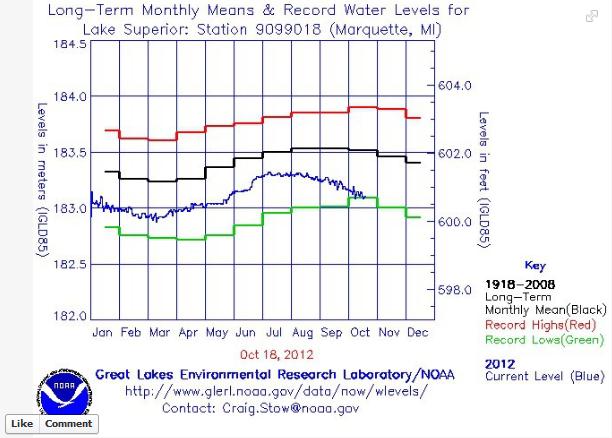
Low Water Levels on Lake Superior. Here's a post from the
Marquette office of the National Weather Service, via FB: "
You
may have heard that the Great Lakes water levels are below normal.
According to the U.S. Army Corps of Engineers, as of October 17, 2012,
Lake Superior was at 600.69 feet, which is 1.41 feet below the
long-term average of 602.1 ft and 0.1 feet below the all time record low
for October of 600.7 ft set back in 1925. The other Great Lakes are
also below normal and very near the all time record lows for October.
Mean levels are calculated by averaging the best available guage data at
report generation and are subject to change."
In Spite of Severe 2011, No Evidence That Tornadoes Are Getting Worse.
There's an uptick in small, brief tornadoes, possibly due to better
detection (Doppler) and more spotters out in the field looking for them,
but according to this
USA Today article, there is no evidence that major/severe tornadoes are on the rise, nationwide.
Study Shows How Prayer, Meditation Affect Brain Activity.
I'm always on the lookout for stories, photos and commentary that make
me do a double-take. Here's one that fits the bill from
Huffington Post: "
How does prayer and meditation affect brain activity? Dr. Andrew Newberg, MD
is the Director of Research at the Myrna Brind Center for Integrative
Medicine at Thomson Jefferson University Hospital and Medical College
and he has studied the neuroscientific effect of religious and
spiritual experiences for decades. In a video that recently aired on "Through the Wormhole"
narrated by Morgan Freeman on the TV channel Science, Dr. Newberg
explains that to study the effect of meditation and prayer on the
brain, he injects his subjects with a harmless radioactive dye while
they are deep in prayer / meditation. The dye migrates to the parts of
the brain where the blood flow is the strongest, i.e,. to the most
active part of the brain..."
Speaking of prayer:
Why Republicans Should "Pray For Rain". Here is the summary of a 2005 paper (pdf here); political science researchers conclude: "
The
relationship between bad weather and lower levels of voter turnout is
widely espoused by media, political practitioners, and, perhaps, even
political scientists. Yet, there is virtually no solid empirical
evidence linking weather to voter participation. This paper provides an
extensive test of the claim.We examine the effect of weather on voter
turnout in 14 U.S. presidential elections. Using GIS interpolations, we
employ meteorological data drawn from over 22,000 U.S. weather stations
to provide election day estimates of rain and snow for each U.S.
county. We find that, when compared to normal conditions, rain
significantly reduces voter participation by a rate of just less than
1% per inch, while an inch of snowfall decreases turnout by almost .5%.
Poor weather is also shown to benefit the Republican party’s vote
share. Indeed, the weather may have contributed to two Electoral
College outcomes, the 1960 and 2000 presidential elections."
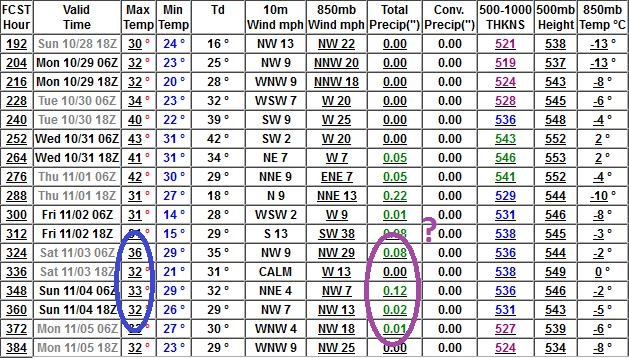 A Chilly Hunting Opener?
A Chilly Hunting Opener?
The extended GFS model shows highs in the 30s the first weekend of
November, with a few tenths of an inch of precipitation. 850 mb
temperatures range from -0 to -5 C, cold enough for wet snow, or
possibly a rain-snow mix. Although I don't see a heavy snow
accumulation for the metro (yet) I could still envision some slush on
the ground for tracking up north. Stay tuned...
Dakota Slush. Yes, it's getting closer. Over 8" of
snow for the mountains of Wyoming and western Montana, a little slush
for North Dakota by Thursday? GFS solution above courtesy of NOAA.
Could A Hurricane Ever Strike Southern California?
With warming oceans the idea isn't as far-fetched as it might sound at
first blush. Tropical storms have struck San Diego and L.A. before, a
long time ago, so the odds aren't zero, but California residents
probably shouldn't lose much sleep over this. Here's an excerpt of a
NASA JPL story: "
There's
an old adage (with several variations) that California has four
seasons: earthquake, fire, flood and drought. While Californians
happily cede the title of Hurricane Capital of America to U.S. East and
Gulf coasters, every once in a while, Mother Nature sends a reminder
to Southern Californians that they are not completely immune to the
whims of tropical cyclones. Typically, this takes the form of rainfall
from the remnants of a tropical cyclone in the eastern Pacific, as
happened recently when the remnants of Hurricane John brought rain and
thunderstorms to parts of Southern California. But could a hurricane
ever make landfall in Southern California? The answer, as it turns
out, is yes, and no. While there has never been a documented case of a
hurricane making landfall in California, the Golden State has had its
share of run-ins and close calls with tropical cyclones. In fact,
California has been affected by at least a few tropical cyclones in
every decade since 1900. Over that timeframe, three of those storms
brought gale-force winds to California: an unnamed California tropical
storm in 1939, Kathleen in 1976 and Nora in 1997. But the primary
threat from California tropical cyclones isn't winds or storm surge.
It's rainfall -- sometimes torrential -- which has led to flooding,
damage and, occasionally, casualties..."
Image credit above: "
In September 1997, powerful Hurricane
Linda, shown in this NASA rendering created with data from the NOAA
GOES-9 satellite, was briefly forecast to strike Southern California,
most likely as a tropical storm, as shown in the inset forecast track
from the Naval Research Laboratory’s Marine Meteorology Division. The
storm eventually turned westward away from land, but still brought
rainfall to parts of Southern California and high surf." Image credit: NASA/NOAA/NRL
TV Viewers "Left In The Dark" About Flood Of Political Ads.
As one political scientist explained to me "other countries give
candidates free airtime. But not the USA, where stations and networks
that take advantage of (free) spectrum, spectrum that belongs to
everyone, and is
licensed to broadcasters with the charge that
they "serve the public interest", CHARGE politicians for the priviledge
of reaching viewers over our nation's airwaves. The result is a
money-treadmill that would make the Founding Fathers turn over in their
graves. Candidates spend much of their time, not legislating, but
raising money to fund negative attack-ads on television. The entire
system is out of whack."
Maybe so. Here's an excerpt from
Free Press: "
On Monday, Free Press released Left in the Dark,
an analysis of political advertising and local news coverage in five
cities — Charlotte, Cleveland, Las Vegas, Milwaukee and Tampa — where ad
spending has skyrocketed this year. With fewer than 45 days left until
Election Day, Americans across the country are facing an unprecedented
increase in political advertising on local stations. Media analysts
project that $3.3 billion — money that pads the bank accounts of
station owners — will be spent on television ads by Nov. 6. Left in the
Dark investigates whether stations airing political ads are balancing
out their often deceptive messages with local coverage of the role this
money is playing in the 2012 elections..."
* cartoon: Richmond Times Dispatch.
"The Lost Wheels" on TPT Almanac. If you missed the live show Friday evening on KTCA, Channel 2, you can watch the replay
here.
I babbled on about the drought, but the highlight of the show (for
dear old dad) was seeing my oldest son play lead guitar for an up and
coming Twin Cities band. Am I a little biased? Yep, but I know good
music when I hear it. You can hear some of the tracks on their new CD,
"Chipper" at their
home page. Hey, I'm hoping Walt supports me in my old age!
More Gray Than Blue. Visibilities fell close to zero
in parts of the metro Saturday morning, a low sun angle prevented the
fog and stratus cloud cover from burning off rapidly. There was some
afternoon sun, enough for highs in the 50s statewide.
Paul's Conservation Minnesota Outlook for the Twin Cities and all of Minnesota
TODAY: Partly sunny, mild. Shower possible central and northern MN. Winds: S 10-15. High: 69
SUNDAY NIGHT: Partly cloudy, still milder than average. Low: 49
MONDAY: Light rain arrives PM hours. High: 67
TUESDAY: Mostly cloudy, still mild for late October. Low: 50. High: 68
WEDNESDAY: Last lukewarm day in sight. Passing shower, T-storm? Low: 55. High: 71
THURSDAY: Partly sunny, breezy and cooler. Low: 53. High: 56
FRIDAY: Clouds, drizzle. A bit raw. Low: 36. High: 48
SATURDAY: Mix of clouds and sun, brisk! Low: 29. High: 42
* photo above courtesy of WeatherNation TV meteorologist Todd Nelson.
The Weather Factor
"Governor Romney, might heavy rain or snow on
Election Day give you an unfair edge at the polls?" That's one question
Bob Schieffer won't be asking Monday. But weather may, in fact, be a
factor on November 6.
A
2005 paper
concludes "rain significantly reduces voter participation by a rate of
just less than 1% per inch, while 1 inch of snowfall decreases turnout
by almost .5%. The political science researchers wrote "poor weather is
also shown to benefit the Republican Party's vote share." Translation:
when the weather is lousy Democrats are more likely to stay home,
unwilling or unable to fight the elements. Weather may have impacted two
Electoral College outcomes, in 1960 & 2000.
Make the most of Indian Summer; the best shot at
70 today & Wednesday. A little rain falls Monday, again midweek,
but not the drenching we need.
We cool down by late week; 7 days from today
highs may be stuck in the 30s and low 40s. Halloween looks cool &
dry (40s to near 50).
My two week outlook is riddled with doubt &
uncertainty. Right now it looks like a rain/snow mix over far northern
states on Election Day, showers for Florida, probably dry in most swing
states.
Stay tuned.
Climate Stories...
The Print Media And Climate Change. Here's the conclusion to a post from Doug Craig at redding.com's "
Climate of Change": "...
Back in 2000, McCright and Dunlap
examined "what they termed a 'conservative countermovement' to
undermine climate change policy, (as) they explored its organization
within right-wing think tanks, (and looked) first at its claims-making
activities and then its organization and tactics. They highlighted the
way such groups draw on scientific 'experts' linked to fossil fuel
industries and concluded that 'our
nation's failure to enact a significant climate policy is heavily
influenced by the success of the conservative movement in challenging
the legitimacy of global warming as a social problem.'" We
have no intention of solving the climate crisis. Neither presidential
candidate has uttered a word related to the topic in the two debates.
And even more telling, the American media establishment is perfectly
content to avoid the topic entirely. We know the laws of physics
require that the climate continue to warm in response to our
cataclysmic production of emissions, but the laws of politics and media
require that we pretend this is not happening."
One Mother's Reaction To The Climate Science: "I'm As Angry As Hell And High Water". Think Progress has the story; here's an excerpt: "
Over
here at Moms Clean Air Force, I’ve been–I’ll admit it–profoundly
depressed that the candidates have blown their chance to talk about the
most important issue facing our planet. Climate Change. Two debates
down. A moderator who says “Whoops! Ran out of time to ask about
climate. So sorry!” Well, I’m sorry too. And I’m angry. Angry as hell
and high water. Two debates about “domestic policy” and not one word has
been uttered about the chaotic domestic weather we’ve been enduring.
Not one word about our unreliable climate. Not one word about the pain
and suffering visited upon millions of Americans because of runaway
greenhouse gas pollution. Not one word about the ugly legacy we will
leave our children...."
Eyes On The Earth.
NASA
has impressive on-line tools to be able visualize Earth's morphing
climate, including real-time global tracking of carbon dioxide and
carbon monoxide (showing huge plumes of pollutants sweeping across China
into the Pacific). The map above shows global temperatures from
Friday. By downloading a JAVA applet you can manipulate all these data
sets in 3-D. Very cool.
Why The Chill On Climate Change? Here's an excerpt of a thoughtful (on the money) Op-Ed at
The Washington Post: "...
Why
does it matter that nobody is talking about climate change? Because
if you accept that climate scientists are right about the warming of
the atmosphere — as Obama does, and Romney basically seems to as well —
then you understand that some big decisions will have to be made. You
also understand that while there are some measures the United States
could take unilaterally, carbon dioxide can never be controlled
without the cooperation of other big emitters such as China, India and
Brazil. You understand that this is an issue with complicated
implications for global prosperity and security. A presidential
campaign offers an opportunity to educate and engage the American
people in the decisions that climate change will force us to make.
Unfortunately, Obama and Romney have chosen to see this more as an
opportunity to pretend that the light at the end of the tunnel is not
an approaching train."
Climate Change: Journalism's Never-Ending Fight For Facts. Here's an excerpt of a story at
The Guardian's Environment Blog: "
The debate about climate change
is dogged – possibly even defined – by its interminable, intractable
tug of war over the "facts". A hand grenade is lobbed into no-man's
land triggering a volley of return fire. But, when the dust settles,
can anyone truly claim to have advanced their position? Of course, the
art of "manufacturing doubt"
has long been in the playbook of those hoping or needing to divert
attention away from evidence. We saw it a generation ago with smoking,
just as we see it today with climate change. But knowing how this
blatant tactic is deployed doesn't make it any easier to nullify or
deter. Compounding the problem is the speed at which "facts" can now
spread unchallenged across the internet. Rebutting or contextualising
inaccuracies takes expertise and, above all, time and energy..." Graphic above: NOAA NCDC.
The Sad History Of Climate Policy, According to David Brooks. Here's a clip from an important Ezra Klein Op-Ed at
The Washington Post's Wonkblog: "...
So,
to summarize: Addressing climate change by pricing carbon — an idea
Brooks supported then and supports now — was a bipartisan project in
2003. It became a partisan project because Al Gore thought it was
important enough to make a documentary about. Republicans began opposing
efforts to price carbon, in part because they hate Al Gore. That left
funding renewables research as the only avenue for those worried
about climate change. Funding renewables research means funding some
projects that won’t work out, and some that might make Al Gore rich.
This led to bad publicity that tarnished the whole program. The
passivity of Brooks’s conclusion is astonishing. This isn’t a story of
overreach, misjudgements, and disappointment. It’s a story of
Republicans putting raw partisanship and a dislike for Al Gore in front
of the planet’s best interests. It’s a story, though Brooks doesn’t
mention this, of conservatives building an alternative reality in which
the science is unsettled, and no one really knows whether the planet
is warming and, even if it is, whether humans have anything to do with
it. It’s a story of Democrats being forced into a second and
third-best policies that Republicans then use to press their political
advantage..."
Photo credit: "
Sorry, planet. You never should have let Al Gore make that documentary." (Joel Boh — Reuters)
* the David Brooks Op-Ed at The New York Times is
here. Subscription may be required.
A Rogue Climate Experiment Outrages Scientists. An attempt at geo-engineering climate (without any permission?) Scientists gone rogue? Here's a clip from a
New York Times article: "
A
California businessman chartered a fishing boat in July, loaded it
with 100 tons of iron dust and cruised through Pacific waters off
western Canada, spewing his cargo into the sea in an ecological
experiment that has outraged scientists and government
officials...Marine scientists and other experts have assailed the
experiment as unscientific, irresponsible and probably in violation of
those agreements, which are intended to prevent tampering with ocean
ecosystems under the guise of trying to fight the effects of climate change..."
Interior Department Creates Climate Change Committee. Here's the intro to a story at
Human Events: "
The
Obama administration is creating an advisory committee on climate
change to advise the federal government on future operations. The
Interior Department announced the new bureaucracy in a recent federal
registry notice along with a call for nominations by Nov. 19 to seat
the 25-member board. The notice specifically states membership will be
comprised of state and local government employees, non-governmental
organizations, Native American tribes, academia, individual landowners
and business interests...."

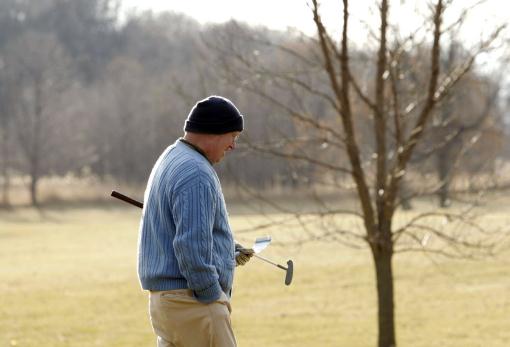
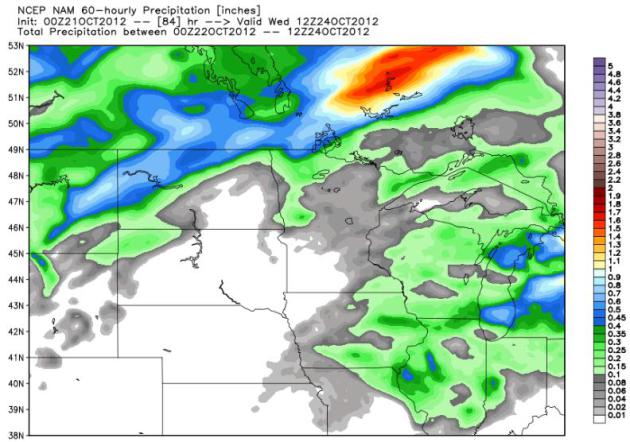
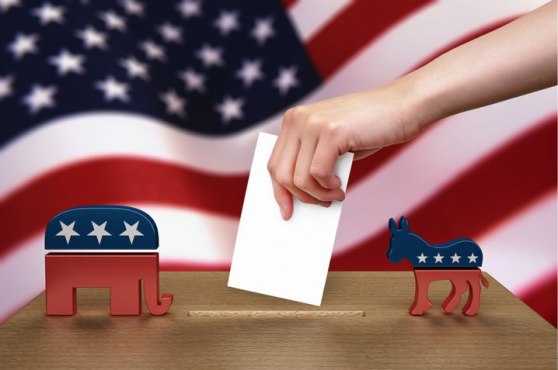
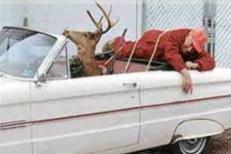
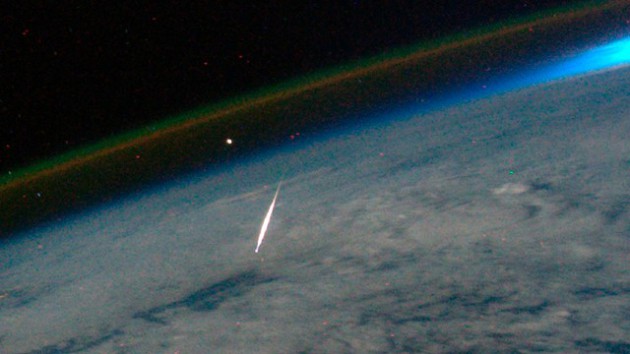
 Getting Better.
If the sun comes out fairly quickly during the morning and midday hours
we should see highs in the mid to upper 60s, possibly brushing 70 over
the south metro with low to mid 70s south and west of the Twin Cities.
Unseasonably mild weather spills over into midweek, followed by a
Novemberlike smack by late week. Graph: Iowa State.
Getting Better.
If the sun comes out fairly quickly during the morning and midday hours
we should see highs in the mid to upper 60s, possibly brushing 70 over
the south metro with low to mid 70s south and west of the Twin Cities.
Unseasonably mild weather spills over into midweek, followed by a
Novemberlike smack by late week. Graph: Iowa State. 4 Mild Days, Then Reality Sets In.
The ECMWF keeps us mild into midweek; Wednesday looks like the warmest
day with the best chance of 70-degree highs nearby. The best chance of
(light) rain comes Monday, again Wednesday - when there may be enough
instability for a few T-showers. Enjoy the mild spell because highs may
hold in the 30s to near 40 next weekend.
4 Mild Days, Then Reality Sets In.
The ECMWF keeps us mild into midweek; Wednesday looks like the warmest
day with the best chance of 70-degree highs nearby. The best chance of
(light) rain comes Monday, again Wednesday - when there may be enough
instability for a few T-showers. Enjoy the mild spell because highs may
hold in the 30s to near 40 next weekend.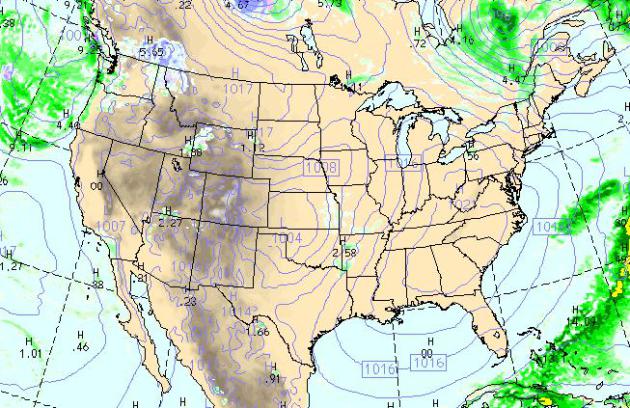


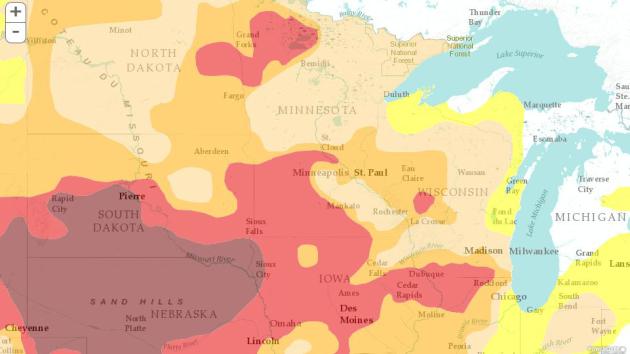
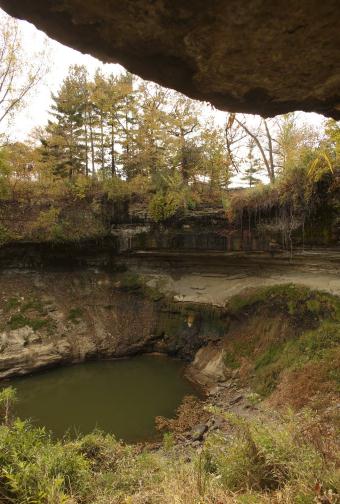
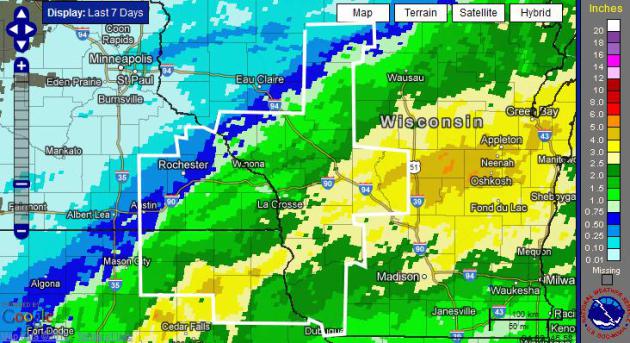




 A Chilly Hunting Opener?
The extended GFS model shows highs in the 30s the first weekend of
November, with a few tenths of an inch of precipitation. 850 mb
temperatures range from -0 to -5 C, cold enough for wet snow, or
possibly a rain-snow mix. Although I don't see a heavy snow
accumulation for the metro (yet) I could still envision some slush on
the ground for tracking up north. Stay tuned...
A Chilly Hunting Opener?
The extended GFS model shows highs in the 30s the first weekend of
November, with a few tenths of an inch of precipitation. 850 mb
temperatures range from -0 to -5 C, cold enough for wet snow, or
possibly a rain-snow mix. Although I don't see a heavy snow
accumulation for the metro (yet) I could still envision some slush on
the ground for tracking up north. Stay tuned...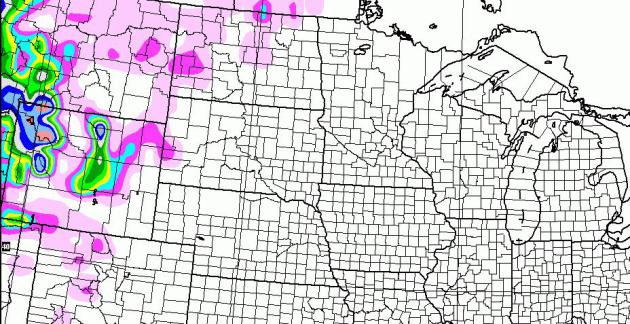
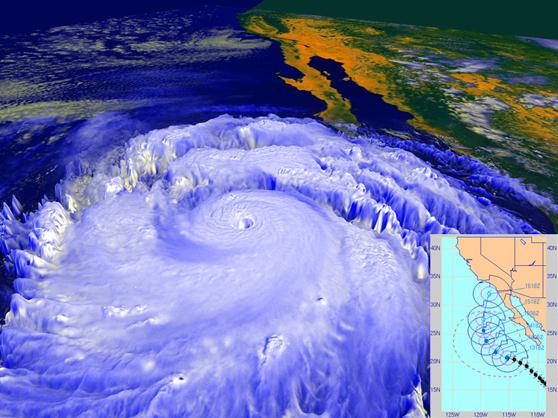

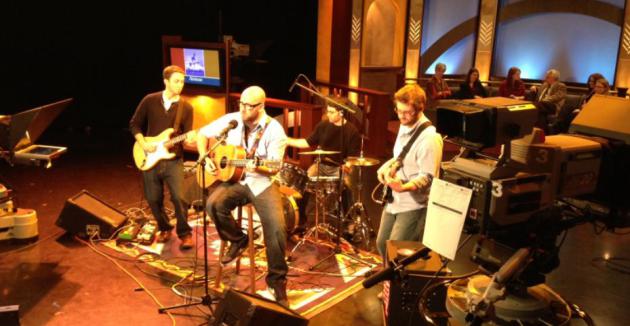


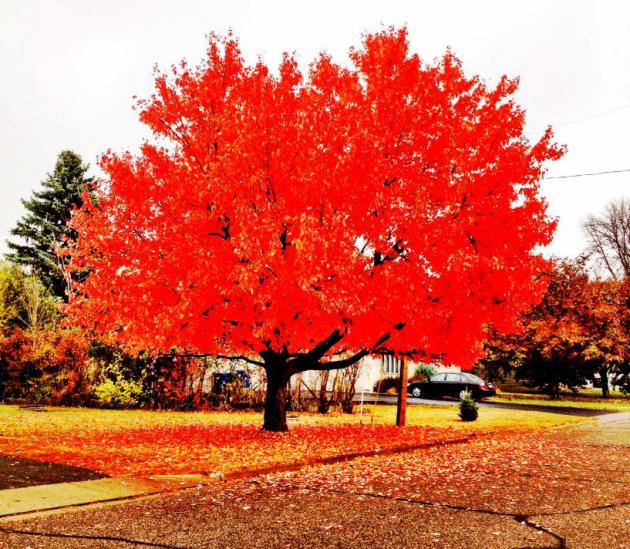
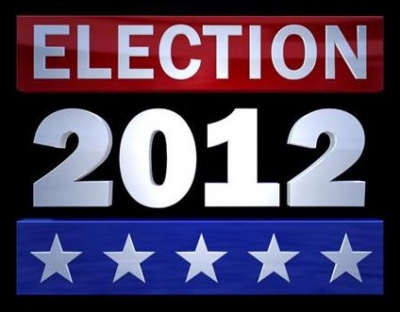

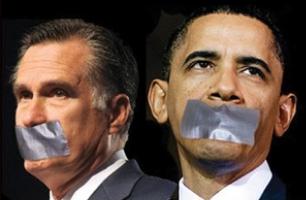
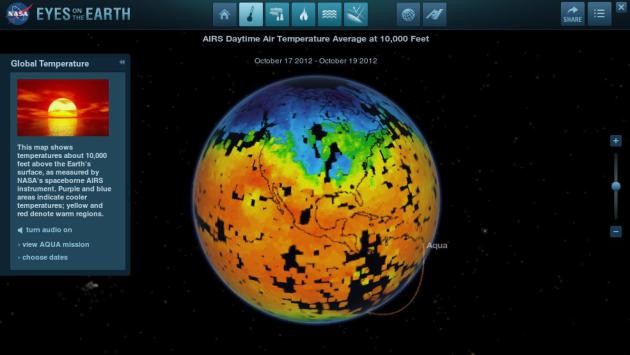
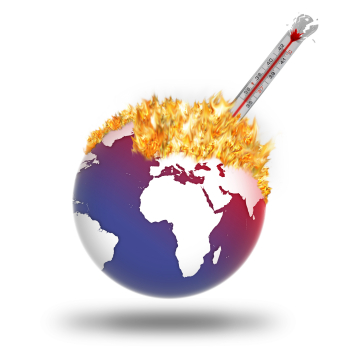
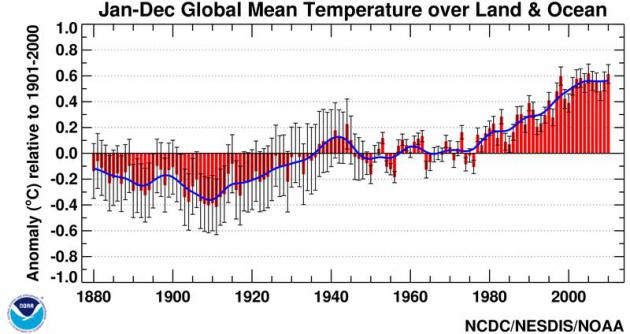
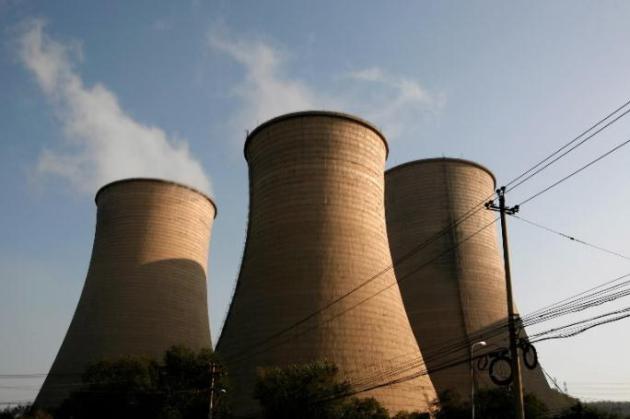
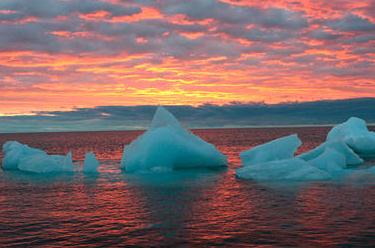
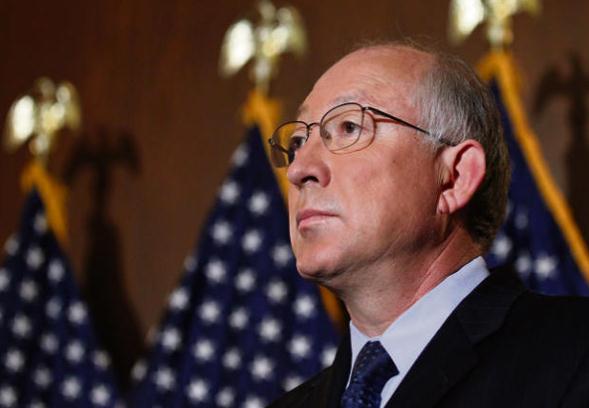
No comments:
Post a Comment